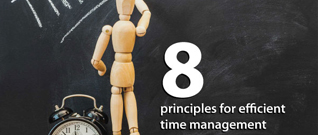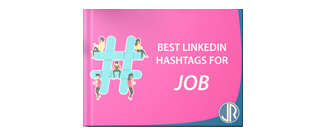The 3 steps of successful fairs - start making profits
Organizing a fair is both time and money consuming. If you don't get much return from it, you might be wasting precious resources. With the following 3 tips, you will not waste money on fairs ever again.
I have been participating in fairs, sometimes as exhibitor, sometimes as visitor for a decade. I have organized fairs in USA, Germany, UK, Hong Kong and China. Each fair I have handled has given me more experience and know-how on organizing such events. Through this series of articles and materials I wish to share this knowledge with you.

Setting goals and objectives
All the rest won't matter, all your efforts will be wasted if you don't start with this simple step: set objectives.
Traditionaly, fairs have 4 major types of objectives:
- finding partners, customers, suppliers, investors
- generating brand awareness
- collecting data
- signing contracts
Whichever might be yours, make sure you and your team agree on specific goals and quantify them. What would be a "successful fair" to you? How many business cards collected or contracts signed could represent a success?
If you are looking for brand awareness, you can also quantify your success: press coverage, number of flyers distributed or demonstrations made, etc.
Until you have clearly defined and communicated your goals, there is no reason to go further.
The 3 steps to success
Observing the following steps shall give you all you need to succeed in tradeshows or consumer fairs.
1. Meet new people

It sounds pretty obvious - why else would you go on fairs?
Nonetheless, I have faced countless times people missing real opportunities on tradeshows. Don't simply stand at your booth waiting for potential customers to come and ask for your products.
Move, go visit others booths, engage conversations and gather feedback. Listen to what people have to say, positive and negative.
Fairs are the perfect opportunity to collect a large amount of feedback-data that will help you improving your product as well as your marketing strategy and sales targeting.
Even if your aim is to find customers, look for potential new suppliers, investors, partners... Considering the time and money this event cost you, get the best out of it!
2. Collect data

Collecting data is the very heart of every fair strategy. If you are not interested in collecting data, you really have no reason to join trade and consumer fairs.
And when I talk about data, I am not talking about collecting piles of useless business cards!
How many times have I seen companies collecting tons of business cards to finally return to their office and either trash them or simply not remember who-was-who?
No, collecting data means properly collecting information about each of your conversations. Who did you meet? Which company was he from? What was the conversation about? Could he be a potential customer? Etc.
There is no way, after 5 days of fair, you could remember all these details if you didn't collect data efficiently!
Luckily, I have prepared a template of data collection sheet - feel free to download the tradeshow data collection sheet here or use myfairtool to collect exhibition prospect data efficiently!
3. Follow up
Here might be the pain point for most companies.
How to follow up? I have seen several situations, usually far from optimal.
You have companies that simply don't do any follow up, because they did not record data properly. You have those that collected business cards and send a batch follow up email - usually a few weeks after the fair since it takes time to copy the email addresses from all business cards. Finally, you have those who do a proper follow up with a few key contacts and give up the others.
But what would be a proper way to follow up?
If you have followed step 2 correctly, you should have a folder with lots of data sheets containing detailed information about each person you've met.
Start by regrouping these in categories - people that require personalized follow up, people that just need to be thanked for meeting you, etc.
Make sure you send a proper follow up email to each of them within three days maximum after the end of the fair: no one will remember you 2 weeks from now.
Act quick and make sure your email contains details about your meeting - beyond showing that you are very active, it also shows that you care about the person and properly recorded the points discussed.
Analyze results and CPA

If you have followed each step, your fair should be a success. But how to measure success?
I asked you earlier to clearly identify and communicate goals. Time to review them!
If your purpose was to collect data or business cards, have you reached your goals? If it was to find partners, suppliers, etc. have you?
That analysis will tell you whether you should return to this fair the following year.
But most importantly, you should calculate your CPA (Cost Per Acquisition). To achieve that, you might need to wait for a month and see if the prospects you met turned into customers.
Once you have a clear list of all contracts signed, a simple calculation will give you your CPA.
CPA = total cost of the fair / number of new customers acquired
Let's imagine the organization of your booth cost you 20,000$ and you got 20 new customers: 20,000/20 = 1,000. Each customer cost you 1,000$. The question is now easy: in the long run, is each of these clients going to bring you MORE than 1,000$? If yes, it was a success! If not... you've paid a high price to acquire customers that will not generate enough business to cover your costs. In such case, maybe you should seriously reconsider attending this fair OR improve the way you handle it.
Organizing a fair becomes easier and easier over time but it takes a lot of self-discipline to become efficient and cost effective. I strongly encourage you to read "Checklist for a perfect tradeshow or consumer fair" if you haven't done so. It contains all you need to know to organize a fair and contains lots of valuable material you can use to organize your fairs!
Last update: 2024-04-21 Tags: fair tradeshow consumer show consumer fair data collection

















 Français
Français English
English